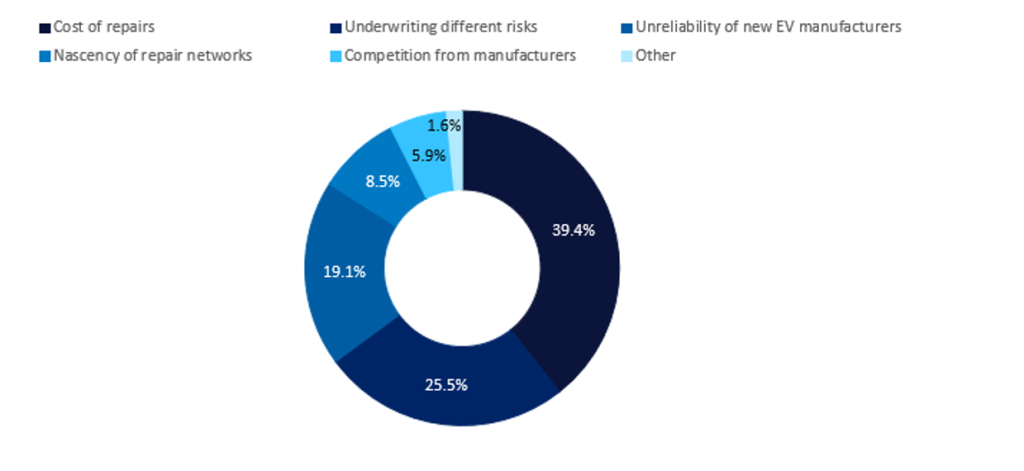Overview
The Estonian insurance industry declined by 4.4% in 2011 over the previous year due to a significant decrease in life insurance business, caused primarily by a slowdown in demand for investment-related insurance products. The non-life segment, however, remained relatively stable in 2011. Direct marketing is the key distribution channel for life insurance products, while brokers are the prime channel for non-life products.
The Estonian insurance industry depreciated in 2008 due to the global financial crisis. However, it showed signs of recovery in 2009 with a healthy growth of 13.3% in 2010. The impressive rise in 2010 was backed by improvements in the life insurance segment, which registered an increase of 37.1% over 2009. In terms of written premium, the Estonian insurance industry grew from EUR403.3 million (US$593.4 million) in 2008 to EUR457.8 million (US$637.7 million) in 2012, recording a CAGR of 3.2% over the four years.
Gradual progression in the country’s economic condition resulted in more investor confidence, which influenced the overall insurance industry in 2010. However, the industry shrunk by 4.4% in 2011 due to a substantial drop in investment-related life products such as unit-linked insurance. The non-life segment was relatively stable between 2007 and 2011. The written premium of the Estonian insurance industry is expected to jump from EUR457.8 million (US$637.7 million) in 2012 to EUR682.5 million (US$950.6 million) in 2017, recording a projected CAGR of 8.3%.
Insurance penetration (written premium as a percentage of GDP) in Estonia stood at 2.7% in 2012, which was significantly lower than European countries such as Spain (5.49%), Portugal (6.28%), Germany (6.9%) and France (9.47%). However, insurance penetration in Estonia was considerably higher than other Baltic states: in Latvia it was 1.94% and in Lithuania, 1.6%. Life insurance penetration stood at 1% in 2012, while the penetration of the non-life segment was 1.57%. The insurance industry is regulated by the Financial Supervision Authority of Estonia, and insurance such as third-party auto insurance and professional liability cover for insurance intermediaries and bankruptcy trustees is compulsory.
Non-life is the main segment in the Estonian insurance industry, representing 58.2% of the written premiums in 2012, followed by life insurance. Non-life is expected to continue its dominance over the coming years. Motor insurance is the leading category in the non-life segment, accounting for 64.5% of its written premiums in 2012. Estonia’s personal accident and health segment is very small, but was the fastest-growing segment between 2007 and 2011, with a CAGR of 12.5%.
Demand for unit-linked products
How well do you really know your competitors?
Access the most comprehensive Company Profiles on the market, powered by GlobalData. Save hours of research. Gain competitive edge.

Thank you!
Your download email will arrive shortly
Not ready to buy yet? Download a free sample
We are confident about the unique quality of our Company Profiles. However, we want you to make the most beneficial decision for your business, so we offer a free sample that you can download by submitting the below form
By GlobalDataMajor changes took place to unit-linked policies and annuities in the first half of 2012. The average contribution to annuities increased from EUR294 (US$409.4) in the first half of 2011 to EUR376 (US$523.6) in the first half of 2012, while the contribution paid into unit-linked polices fell from EUR312 (US$434.4) to EUR229 (US$318.9). No significant changes in terms of contributions took place in other life insurance categories.
Demand for unit-linked life insurance products fell by 18.9% in 2011 over the previous year, resulting in an overall reduction in life insurance premiums during 2011. Life insurance also fell by around 9% in the first half of 2012 compared to the same period the previous year, led by declines in endowment and unit-linked products. A cautious approach towards investment activities in 2011 and the first half of 2012 led to a dip in demand for investment-related products such as unit-linked policies.
Share of land vehicle insurance
The share of land vehicle insurance (own damage insurance) in the non-life segment declined for a three year period, from 2009 to 2012. The decrease in 2009 was primarily due to a fall in vehicle sales, while in 2010 the downfall was propelled by reduced insurance tariffs, a trend that continued in 2011. However, the share of third-party motor liability insurance improved slightly in 2011, when insurers raised premiums in the second half of the year after incurring substantial losses in the first half.
Limited size of the Estonian insurance industry
The surging economy propelled the growth of insurance industry between 2007 and 2011, but the value of the overall domestic industry remains very low, limited by the small size of the economy. Both the country’s population and its GDP are very small. GDP was valued at EUR16 billion (US$22.2 billion) in 2011. This discourages global insurers from entering Estonia. An increase in minimum capital requirements as part of Solvency II is also expected to have an adverse effect on smaller insurance companies.
Highly concentrated industry
The Estonian insurance industry is highly concentrated, with the top five life insurers representing 100% of the segment in terms of written premium in 2011. The leading five non-life companies accounted for 69% of their segment. The shares of the top two life insurers increased in 2011 over the previous year, while the share of the third-largest insurer, Mandatum, fell significantly by 11%. No significant fluctuations in the market shares of non-life companies were noted in 2011 with the exception of Codan, whose market share grew by 4%.
Four life insurance companies and eight non-life insurers operated in Estonia, as of 31 December 2011. In addition to these, one foreign insurer offered life insurance products and four provided non-life services through local branches. A total of 88 life insurers and 363 non-life insurance companies were present in the “Register of Providers of Cross-border Services” by the end of 2011. Swedbank Life Insurance is the leader in the life insurance segment, while If P&C Insurance leads the non-life segment.
Life insurance prospect by category
The written premium of the Estonian life insurance segment expanded from EUR123.3 million (US$181.4 million) in 2008 to EUR165.2 million (US$230.1 million) in 2012, at a CAGR of 7.6%. The individual life category accounted for the share of 56.0% of the segment’s total written premiums in 2012, with a value of EUR92.6 million (US$128.9 million).
The written premium of the Estonian non-life insurance segment increased from EUR263.6 million (US$387.8 million) in 2008 to EUR266.4 million (US$371.0 million) in 2012, at a CAGR of 0.3%. Motor insurance was the largest category within the non-life insurance segment in terms of written premium during the review period. General liability insurance valued EUR10.7 million (US$14.9 million) in 2012, which accounted for 4.0% of the overall non-life insurance written premium. Property insurance, with a total written premium of EUR79.8 million (US$111.2 million) in 2012, was the second-largest category in 2012.
The written premium of the Estonian personal accident and health insurance segment grew from EUR16.4 million (US$24.1 million) in 2008 to EUR26.3 million (US$36.6 million) in 2012, at a CAGR of 12.5%. The health insurance category accounted for the largest share, 44.5%, of the total personal accident and health insurance written premium value in 2012, followed by the personal accident and travel insurance categories. The written premium for the health insurance category rose from EUR5.6 million (US$8.2 million) in 2008 to EUR11.7 million (US$16.3 million) in 2012, recording a CAGR of 20.2%.
The written premium of the Estonian reinsurance segment advanced from EUR0.1 million (US$0.1 million) in 2008 to EUR0.2 million (US$0.3 million) in 2012, recording a CAGR of 20.5%. The facultative reinsurance category accounted for a 65.5% share, and the treaty reinsurance category accounted for the remaining 34.5%.
Distribution channels
Life
The life insurance written premium generated through direct marketing advanced from EUR19.7 million (US$29.0 million) in 2008 to EUR27.4 million (US$38.2 million) in 2012, at a CAGR of 8.6%.
The life insurance written premium generated through bancassurance jumped from EUR11.8 million (US$17.4 million) in 2008 to EUR17.4 million (US$24.2 million) in 2012, at a CAGR of 10.1%.
The life insurance written premium generated through agencies expanded from EUR2.6 million (US$3.9 million) in 2008 to EUR6.5 million (US$9.1 million) in 2012, at a CAGR of 25.4%.
The life insurance written premium generated through agencies increased from EUR2.6 million (US$3.9 million) in 2008 to EUR6.5 million (US$9.1 million) in 2012, at a CAGR of 25.4%.
The life insurance written premium generated through brokers valued EUR2.3 million (US$3.2 million) in 2012, after recording a CAGR of 3.6%.
Non-life
The non-life insurance written premium generated through direct marketing I grew from EUR62.4 million (US$91.8 million) in 2008 to EUR63.6 million (US$88.6 million) in 2012, at a CAGR of 0.5%.
The non-life insurance written premium generated through direct marketing advanced from EUR62.4 million (US$91.8 million) in 2008 to EUR63.6 million (US$88.6 million) in 2012, at a CAGR of 0.5%.
The non-life insurance written premium generated through agencies improved from EUR25.7 million (US$37.9 million) in 2008 to EUR26.4 million (US$36.7 million) in 2012, at a CAGR of 0.6%.
The non-life insurance written premium generated through e-commerce expanded from EUR16.7 million (US$24.6 million) in 2008 to EUR17.3 million (US$24.0 million) in 2012, at a CAGR of 0.8%.
The non-life insurance written premium generated through brokers valued EUR131.7 million (US$183.4 million) in 2012, after recording a CAGR of 0.4% since 2007.







